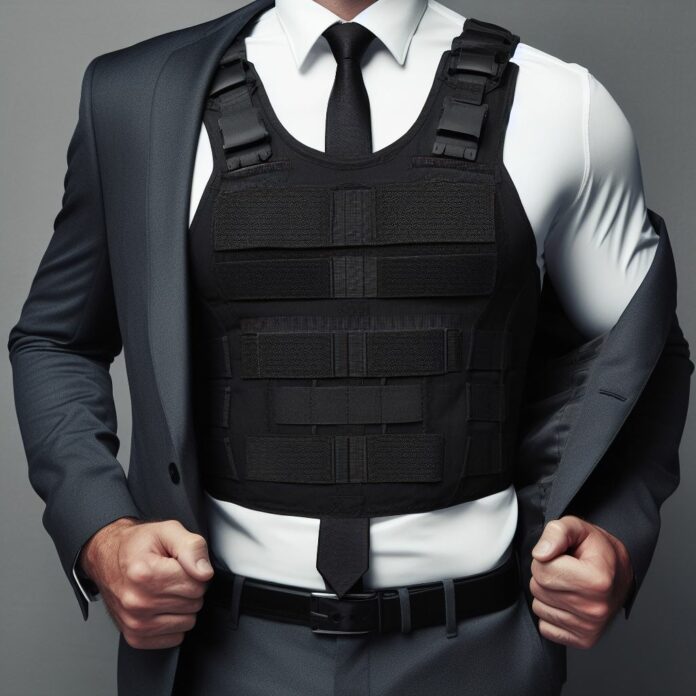When it comes to personal safety and protection, a concealed bulletproof vest can be an essential piece of equipment. This article will guide you in choosing the right concealed bulletproof vest to meet your specific needs.
Factors to Consider When Choosing a Concealed Bulletproof Vest
1. Level of Protection: The level of protection offered by a bulletproof vest is a crucial consideration. It is important to understand the different ballistic protection levels and choose one that offers adequate protection against the potential threats you may face.
2. Comfort and Fit: A comfortable and well-fitting vest is essential for all-day wear. Consider factors like adjustable straps, lightweight materials, and ergonomic design to ensure maximum comfort and mobility.
3. Material and Construction: The materials used and the construction techniques employed determine the durability and effectiveness of a vest. Look for high-quality materials like Kevlar or Dyneema, and pay attention to stitching and reinforcement for superior protection.
4. Concealability: The ability to conceal the vest without attracting attention is crucial. Look for vests that are designed for undercover use, with features like a slim profile and the ability to be worn under clothing without being conspicuous.
5. Size and Weight: Choosing the right size and weight is important for both comfort and effectiveness. A properly fitted vest will provide optimal protection, while considering weight distribution will ensure ease of movement and reduced fatigue.
6. Durability and Longevity: A concealed bulletproof vest is an investment, and it is essential to choose one that is built to last. Look for vests that are tested and certified by reputable organizations, and consider factors like warranty and maintenance requirements.
Types of Concealed Bulletproof Vests
There are different types of concealed bulletproof vests available, each with its own advantages. These include:
1. Soft Body Armor: Soft body armor is flexible and lightweight, making it comfortable for extended wear. It offers protection against handguns and can be worn discreetly under clothing.
2. Hard Body Armor: Hard body armor provides superior protection against rifle rounds and is typically worn by military or law enforcement personnel in high-risk situations. However, it may be bulkier and less concealable.
3. Combination Body Armor: Combination body armor offers a balance between flexibility and enhanced protection. It combines the benefits of both soft and hard body armor to provide versatile and reliable protection.
How to Properly Fit and Wear a Concealed Bulletproof Vest
Proper fit and wear of a concealed bulletproof vest are crucial for optimal protection. Follow these guidelines:
1. Trusted Sizing Guidelines: Refer to the manufacturer’s size chart and follow their guidelines for accurate sizing. A vest that fits well will provide the intended level of protection.
2. Proper Vest Adjustment: Adjust the vest’s straps and closures to ensure a snug and secure fit. The vest should be close to the body without restricting movement or causing discomfort.
3. Considerations for Layering: Take into account the clothes you typically wear when selecting a vest. Consider the thickness of clothing and adjust the vest accordingly for optimal comfort and concealment.
Maintaining and Cleaning a Concealed Bulletproof Vest
Regular maintenance and cleaning are essential to ensure the effectiveness and longevity of your concealed bulletproof vest. Follow these guidelines:
1. Manufacturer’s Instructions: Always refer to the manufacturer’s instructions for specific recommendations on cleaning and maintenance. Different vests may require different care routines.
2. Spot Cleaning and Maintenance: Use mild soap and water to spot clean any stains or dirt on the vest. Avoid harsh chemicals or abrasive cleaning methods that may damage the protective layers.
3. Storage and Handling: Properly store your vest in a cool, dry place when not in use. Avoid exposing it to excessive heat or moisture, as this can affect its ballistic properties.
Legal Considerations for Concealed Bulletproof Vests
Before purchasing or using a concealed bulletproof vest, familiarize yourself with the legal considerations. These include:
1. Laws and Regulations: Research and understand the local laws and regulations regarding the ownership, possession, and use of bulletproof vests in your area.
2. Ownership Restrictions: Some jurisdictions may have restrictions or regulations on who can own or purchase bulletproof vests. Ensure you comply with all legal requirements.
3. Proper Usage and Disclosure: It is important to use the vest responsibly and disclose its presence if required by law enforcement or security personnel. Be aware of any specific regulations regarding the use of bulletproof vests in public settings.
By considering these factors and following the guidelines provided, you can confidently choose a concealed bulletproof vest that meets your needs and ensures your personal safety and protection.
Understanding the Importance of a Concealed Bulletproof Vest
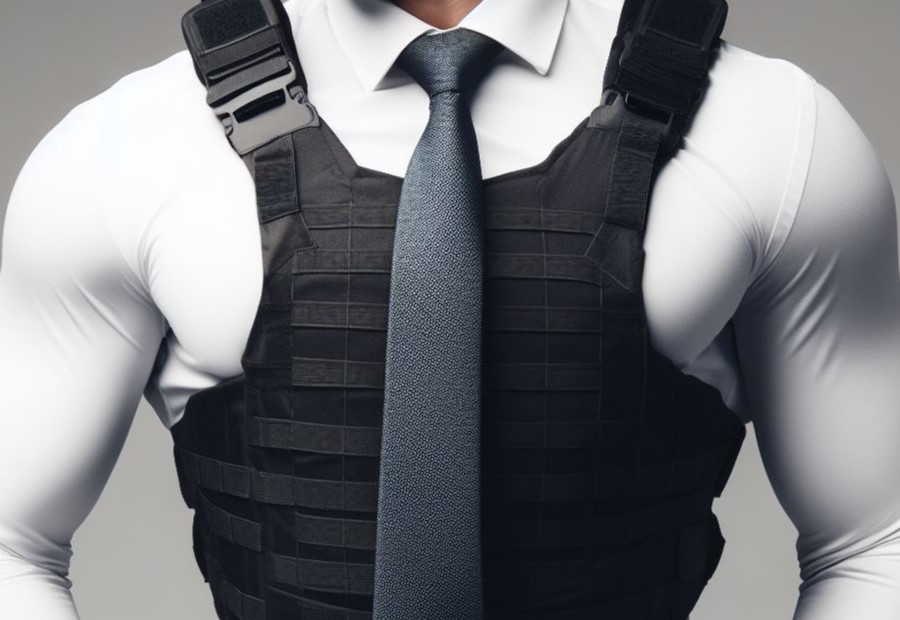
Understanding the importance of a concealed bulletproof vest is crucial for personal safety and protection. A concealed bulletproof vest provides discreet and effective defense against potential threats and attacks.
It offers protection against bullets and sharp objects, minimizing the risk of serious injury or even death. Wearing a concealed vest allows individuals to go about their daily activities without drawing attention to their protective gear.
It is especially important for individuals who work in high-risk professions or those who live in areas with increased crime rates.
Factors to Consider When Choosing a Concealed Bulletproof Vest

When it comes to choosing a concealed bulletproof vest, there are several crucial factors to consider. From level of protection to comfort and fit, material and construction to concealability, size and weight to durability and longevity, each aspect plays a significant role in determining the right vest for you.
In this section, we’ll dive into the details of these factors, providing you with valuable insights to help you make an informed decision. So, let’s explore what it takes to select the ideal concealed bulletproof vest.
Level of Protection
When selecting a concealed bulletproof vest, the level of protection is a crucial aspect to take into account. The level of protection plays a significant role in determining the effectiveness of the vest in thwarting ballistic threats.
Here, we present various levels of protection for you to consider:
- Level I: This level offers the most basic form of protection, designed to halt bullets from small caliber handguns.
- Level II: This level provides enhanced protection against firearms with higher calibers, surpassing the safeguard offered by Level I.
- Level IIIA: With this level, you obtain protection against a wide range of handguns, including high-velocity and large caliber ones.
- Level III: If you opt for this level, you gain defense against rifle rounds and the ability to withstand multiple rounds of various calibers.
- Level IV: Offering the highest level of protection, this level is capable of halting armor-piercing rifle rounds.
The appropriate level of protection depends on your specific requirements and the potential threats you might come across. Factors to consider include the nature of your work or activities, the likelihood of encountering firearms, and the level of risk involved.
Always ensure that you choose a concealed bulletproof vest that provides the necessary level of protection tailored to your unique circumstances.
Comfort and Fit
When considering the comfort and fit of a concealed bulletproof vest, it is essential to prioritize your own comfort and mobility while ensuring the vest fits snugly to provide maximum protection.
- Adjustable Straps: Look for a vest with adjustable straps to ensure a customized fit that can be easily adjusted according to your body shape and size.
- Ergonomic Design: Choose a vest that has been designed with ergonomic features, such as contoured panels and shoulder straps, to enhance comfort and ensure a better fit.
- Proper Sizing: It is crucial to select the right vest size based on accurate measurements of your chest, waist, and height. Following trusted sizing guidelines will help you find the perfect fit.
- Range of Motion: The vest should allow for a full range of motion without hindering your movements. Consider vests that have flexible materials and strategically placed seams to enhance flexibility.
- Weight Distribution: A well-designed vest will distribute the weight evenly across your body, preventing strain or discomfort in specific areas.
Material and Construction
The choice of material and construction is crucial for the effectiveness and durability of a concealed bulletproof vest. When selecting a vest for maximum protection, it is important to consider these factors.
| Material | Construction |
| The bulletproof vest should be made of a strong material capable of effectively stopping projectiles. Commonly used advanced materials such as Kevlar, Dyneema, or Spectra offer a high strength-to-weight ratio and flexibility. These materials are specifically designed to absorb and dissipate bullet energy, reducing the risk of injury. | The construction of a bulletproof vest involves layering the ballistic material to create multiple protective layers. These layers are meticulously stitched or bonded together to ensure proper alignment and stability. It is important to have reinforced seams and high-quality stitching to ensure the vest’s integrity and prevent any gaps or weak points. |
Considering the material and construction of a concealed bulletproof vest is essential for reliable protection and longevity. By choosing a vest made with strong and durable materials and paying careful attention to construction, you can have confidence in its ability to safeguard against potential threats.
The development of bulletproof vests has progressed significantly throughout history. From the use of heavy metal plates in the past to the modern use of lightweight and flexible materials, advancements in material and construction techniques have greatly improved the effectiveness and comfort of bulletproof vests.
Researchers and manufacturers continue to innovate, aiming to provide even better protection for those in need.
Concealability
Concealability is a crucial factor to take into account when selecting a hidden bulletproof vest. When choosing the right vest, consider the following key points:
- Design: Make sure to find a vest specifically designed for concealment. It should have a slim profile and be lightweight, allowing for easy concealment under clothing.
- Material: It is advisable to opt for a vest made from flexible and breathable materials like Kevlar or Dyneema. These materials offer protection while ensuring comfort and freedom of movement.
- Concealment Features: Check for adjustable straps or closures that enable a personalized fit and improved concealment. Some vests may also have specialized panels or inserts that help distribute the weight evenly and maintain a sleek appearance.
- Size and Shape: Consider the size and shape of the vest. It should fit snugly against the body without protruding or creating noticeable lines. Ensure it covers vital areas without compromising concealment.
Size and Weight
When choosing the right concealed bulletproof vest, the crucial factors to consider are its size and weight. The table below provides important information about the size and weight options for different types of vests:
| Vest Type | Size Options | Weight Range |
| Soft Body Armor | Small, Medium, Large, XL, XXL | 2-4 pounds |
| Hard Body Armor | Small, Medium, Large, XL, XXL | 5-8 pounds |
| Combination Body Armor | Small, Medium, Large, XL, XXL | 3-6 pounds |
When considering size, it is important to choose a vest that fits you properly. The vest should not be too tight or too loose, as this can affect both comfort and effectiveness. Take accurate measurements of your chest, waist, and torso length to determine the appropriate size.
Weight is another vital consideration as it can impact your mobility and overall comfort. The weight range provided in the table above gives you an idea of what to expect.
Keep in mind that wearing a vest for extended periods may cause fatigue, so choose a weight that you can comfortably wear for the intended duration.
Durability and Longevity
When considering the durability and longevity of a concealed bulletproof vest, certain factors should be taken into account:
- The quality of the materials used in the construction of the vest. Look for vests made with high-quality ballistic fibers like Kevlar or Dyneema, which offer excellent durability and longevity.
- The level of protection provided by the vest. Higher levels of protection generally translate to a more durable and long-lasting vest.
- The stitching and reinforcement of the vest. Vests with reinforced seams and multiple layers of stitching tend to be more durable and able to withstand wear and tear.
- The maintenance and care of the vest. Proper cleaning, storage, and maintenance can significantly extend the lifespan of a concealed bulletproof vest.
It is important to choose a vest that has been tested and certified by reputable ballistic testing organizations to meet specific durability and longevity standards.
Additionally, consider the following suggestions in order to enhance the durability and maximize the longevity of your concealed bulletproof vest:
- Follow the manufacturer’s instructions for care and maintenance.
- Regularly inspect the vest for any signs of damage or wear and have it repaired or replaced as needed.
- Avoid exposing the vest to extreme temperatures or excessive moisture, as this may weaken the materials.
- Store the vest in a cool, dry place, away from direct sunlight and chemicals.
- Consider investing in a carrier that allows for easy removal and replacement of the ballistic panels, making it easier to maintain and clean the vest.
Types of Concealed Bulletproof Vests
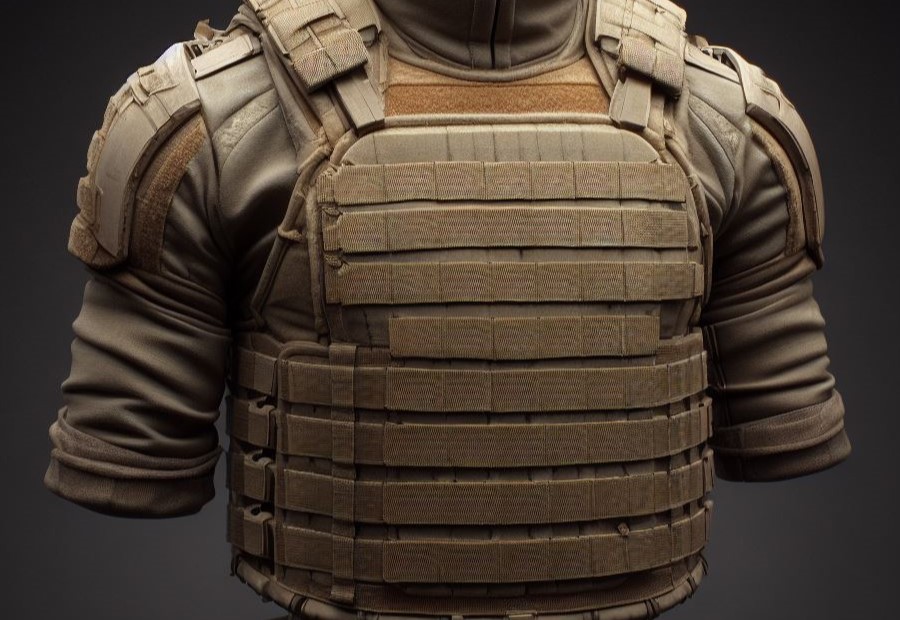
When it comes to choosing a concealed bulletproof vest, understanding the different types available is crucial. In this section, we’ll explore the various options when it comes to concealed bulletproof vests.
From soft body armor to hard body armor and even combination body armor, we’ll unravel the distinct characteristics and functionalities of each type. Get ready to discover the armor that offers the right blend of protection and concealment for your needs.
Soft Body Armor
When it comes to concealed bulletproof vests, soft body armor is an important option to consider. Here are key factors to keep in mind:
- Protection Level: Soft body armor offers reliable protection against handguns and some types of knives.
- Comfort and Fit: Soft body armor is more flexible and lightweight compared to other types, making it more comfortable to wear for extended periods.
- Material and Construction: Soft body armor is typically made from multiple layers of woven or laminated fibers, such as Kevlar, which provide strength and durability.
- Concealability: Soft body armor is designed to be worn discreetly under clothing, allowing for easy concealment.
- Size and Weight: Soft body armor comes in various sizes to accommodate different body types and preferences. It is generally lightweight, allowing for ease of movement.
- Durability and Longevity: Soft body armor requires proper care and maintenance to ensure its effectiveness and longevity.
Hard Body Armor
Level of protection: Hard body armor provides a high level of protection against ballistic threats. It is specifically designed to withstand rifle rounds and other high-velocity projectiles, ensuring maximum safety.
Material and construction: Hard body armor is typically crafted from strong materials such as ceramic, steel, or composite fibers. These robust materials are highly resistant to penetration, enhancing the armor’s ability to disperse impact energy effectively.
Weight: In comparison to soft body armor, hard body armor generally has a heavier weight due to the utilization of these sturdy materials. However, continuous technological advancements have led to the development of lighter-weight hard armor options, offering increased comfort without compromising protection.
Comfort and fit: To ensure optimal protection, proper fit is crucial for hard body armor. It should have adjustable features that accommodate different body sizes and shapes, allowing for a customized fit. Additionally, padding and ergonomic design elements can greatly enhance comfort during prolonged wear.
Concealability: Although hard body armor is inherently bulkier than its soft counterpart, there are concealable options available. These specially designed vests can be discreetly worn underneath clothing, providing covert protection without compromising on effectiveness.
Durability and longevity: Hard body armor is renowned for its exceptional durability and longevity. It is purposefully constructed to withstand the rigors of wear and tear over time, ensuring reliable and long-term use.
Combination Body Armor
| Combination Body Armor | |
| Definition: | A type of concealed bulletproof vest that combines both soft and hard body armor components. |
| Material: | Combines materials such as Kevlar fabric (soft armor) and ceramic or polyethylene plates (hard armor). |
| Level of Protection: | Provides enhanced protection against both ballistic threats (such as bullets) and edged weapon attacks. |
| Advantages: | Offers a higher level of protection compared to soft body armor alone. It combines the flexibility and comfort of soft armor with the rigidity and stopping power of hard armor. |
| Disadvantages: | Combination body armor tends to be heavier and bulkier than soft armor alone, which may limit mobility and concealability. |
| Recommended Usage: | Ideal for law enforcement officers, military personnel, and individuals in high-risk professions where the increased protection outweighs the potential drawbacks of weight and bulk. |
| Proper Maintenance: | Follow the manufacturer’s instructions for cleaning and storage to ensure the longevity and effectiveness of the combination body armor. |
How to Properly Fit and Wear a Concealed Bulletproof Vest
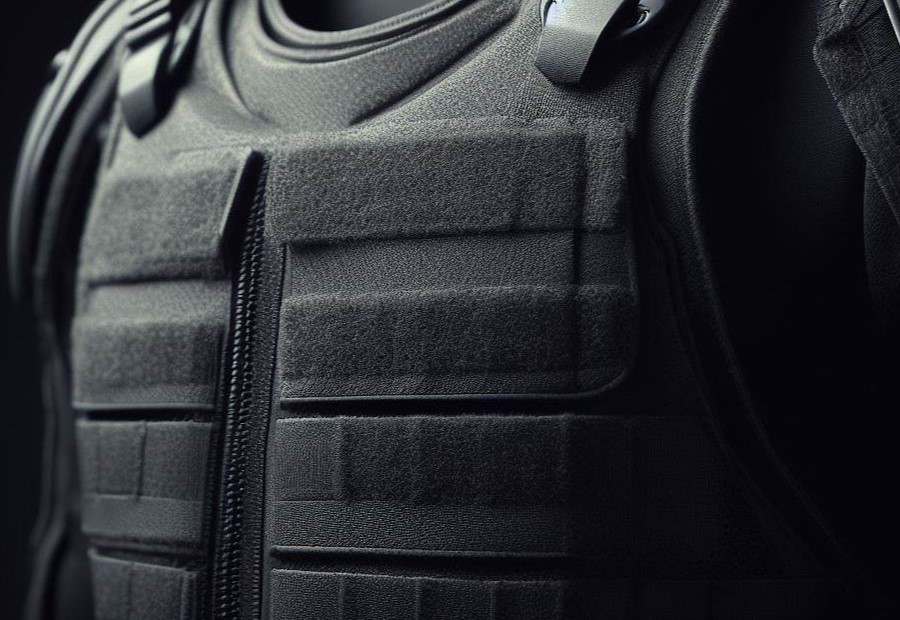
Discover the secrets to wearing a concealed bulletproof vest like a pro! In this section, we’ll explore the key aspects of properly fitting and wearing a bulletproof vest to ensure optimal protection and comfort.
From trusted sizing guidelines to proper vest adjustment techniques, we’ve got you covered. We’ll also discuss considerations for layering to accommodate different situations. Stay tuned to learn the ins and outs of wearing a concealed bulletproof vest effectively.
Trusted Sizing Guidelines
When selecting a concealed bulletproof vest, it is crucial to adhere to trusted sizing guidelines to guarantee the optimal fit and protection. Here are some factors to take into consideration:
| Factor | Description |
|---|---|
| Body Measurements | Take accurate measurements of your chest, waist, and torso length to determine the appropriate vest size. |
| Weight and Mobility | Consider the weight of the vest and how it may affect your mobility. Choose a size that allows you to move comfortably without hindrance. |
| Adjustability | Look for vests with adjustable straps or closures to ensure a snug and secure fit. This allows for some flexibility in case of weight fluctuations or layering. |
| Body Type | Different brands may have variations in sizing to accommodate different body types. Consider your body shape and select a vest that suits you best. |
| Comfort | Try on the vest and assess its comfort level during various movements. It should not restrict your range of motion or cause discomfort during extended wear. |
| Expert Consultation | If possible, consult with experts or professionals who can provide guidance and recommendations based on your specific requirements and circumstances. |
By adhering to these trusted sizing guidelines, you can ensure that your concealed bulletproof vest fits properly and provides the necessary protection when you need it.
Proper Vest Adjustment
Proper vest adjustment is crucial for ensuring that a concealed bulletproof vest provides the maximum level of protection and comfort. Here are the steps to properly adjust a concealed bulletproof vest:
- Put on the vest: Start by putting on the vest and ensure that it is centered on your torso.
- Adjust the shoulder straps: Tighten or loosen the shoulder straps to ensure a snug and secure fit. The vest should be close to your body without restricting movement.
- Secure the side straps: Adjust the side straps to achieve a proper fit. The straps should be snug enough to prevent the vest from shifting but not too tight to restrict breathing or movement.
- Check the length: Ensure that the vest is the correct length for your torso. It should provide adequate coverage without interfering with your range of motion.
- Check the armholes: Ensure that the armholes are the right size for you. They should be large enough to allow for comfortable movement without exposing any gaps in protection.
- Test movement: Move your body around to ensure that the vest stays in place and doesn’t ride up or shift during various activities.
- Make additional adjustments if necessary: If the vest feels uncomfortable or restrictive, make further adjustments to achieve the best fit possible.
- Regularly check and readjust: It’s important to regularly check the fit of the vest and make any necessary adjustments to maintain optimal comfort and protection.
Considerations for Layering
When it comes to layering a concealed bulletproof vest, there are several considerations for layering to keep in mind:
- Compatibility with clothing: Considerations for layering the types of clothing you typically wear and whether the vest can be easily concealed underneath. Look for vests that are slim and have minimal bulk to ensure they can be easily layered with different outfits.
- Flexibility and range of motion: Ensure that the vest allows for a full range of motion and doesn’t restrict movement. Considerations for layering include looking for vests that are lightweight and flexible, allowing you to move freely and comfortably.
- Level of protection: Considerations for layering include the impact of layering on the effectiveness of the vest, so it’s crucial to choose a vest with a high level of protection. Consider the specific threat level you may face and select a vest that offers adequate ballistic or stab protection.
- Comfort: Considerations for layering include the additional heat and discomfort that layering can add. Look for vests with breathable materials and moisture-wicking properties to keep you cool and comfortable throughout the day.
- Proper fit: Considerations for layering include ensuring that the vest fits properly when layered with your clothing. It should provide a snug and secure fit without being too tight or restrictive.
Layering a concealed bulletproof vest requires careful considerations for layering compatibility, flexibility, protection level, comfort, and proper fit. By taking these considerations for layering into account, you can ensure that your vest is effectively concealed while still providing the necessary protection.
Layering has been used throughout history as a means of providing increased protection in combat situations. Ancient warriors would often wear multiple layers of armor to safeguard themselves against various weapons and projectiles.
Today, layering techniques continue to be employed in modern bulletproof vests to enhance their protective capabilities.
By layering materials with different properties and incorporating advanced technologies, manufacturers have been able to create vests that offer optimal protection while maintaining comfort and versatility.
Maintaining and Cleaning a Concealed Bulletproof Vest
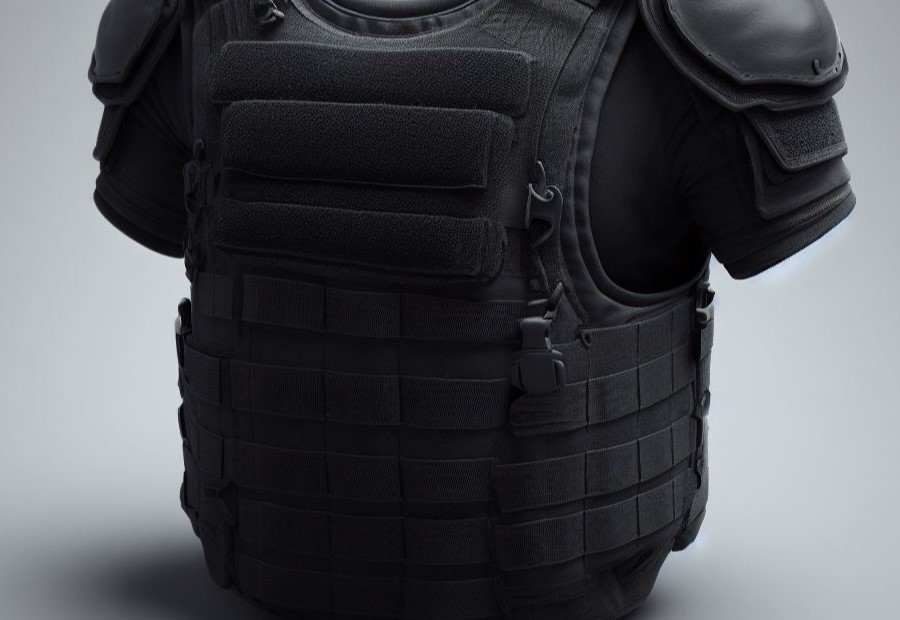
Maintaining and cleaning a concealed bulletproof vest is crucial for its effectiveness and longevity.
In this section, we’ll cover everything you need to know to keep your vest in top-notch condition. From following the manufacturer’s instructions to performing spot cleaning and maintenance, as well as proper storage and handling techniques, we’ve got you covered.
Let’s dive into the essential practices that will ensure your bulletproof vest remains reliable and ready to protect you when it matters most.
Manufacturer’s Instructions
When it comes to maintaining and cleaning a concealed bulletproof vest, it is crucial to follow the Manufacturer’s Instructions to ensure its optimal performance and longevity.
- Read the Manufacturer’s Instructions carefully: Familiarize yourself with the manufacturer’s guidelines for cleaning and maintaining the vest.
- Spot cleaning: In case of any stains or dirt on the vest, it is important to spot clean the affected areas using a mild detergent or cleaning solution recommended by the manufacturer.
- Follow proper drying methods: Some vests may require air drying, while others can be put in a dryer at a specific temperature. It is crucial to follow the recommended drying method to prevent any damage to the vest.
- Regular inspections: Regularly inspect the vest for any signs of wear, tear, or damage. Pay attention to the seams, fastenings, and straps to ensure they are in good condition.
- Storage and handling: When not in use, store the vest in a cool, dry place away from direct sunlight. Avoid folding or compressing the vest excessively, as it may affect its effectiveness.
Spot Cleaning and Maintenance
When it comes to spot cleaning and maintenance for a concealed bulletproof vest, there are a few important considerations to keep in mind:
- Follow manufacturer’s instructions: Always refer to the specific instructions provided by the manufacturer for spot cleaning and maintenance. Different vests may have different cleaning requirements, and it’s important to follow them to ensure the vest remains effective.
- Spot cleaning: In order to remove any stains or dirt from the vest, spot cleaning is highly recommended. Use a mild detergent and a soft cloth or sponge to naturally clean the affected area. Avoid using harsh chemicals or abrasive materials that could potentially damage the vest’s protective layers.
- Drying: After spot cleaning, it’s crucial to allow the vest to air dry completely before storing or wearing it again. Avoid using direct heat sources such as dryers or heaters, as this can harm the materials of the vest.
- Regular inspection: It’s of utmost importance to regularly inspect the vest for any signs of wear, tear, or damage. Check the seams, straps, and panels for any loose threads or fraying. If any damage is found, consult the manufacturer’s instructions on how to appropriately address it.
- Storage: When the concealed bulletproof vest is not in use, it should be stored in a cool, dry place away from direct sunlight. It’s vital to avoid folding or compressing the vest in a way that could cause permanent creases or damage.
Proper spot cleaning and maintenance of a concealed bulletproof vest are essential to ensure its longevity and effectiveness. By following these guidelines, you can help extend the lifespan of your vest and keep it in optimal condition for your safety.
Storage and Handling
When it comes to storage and handling of a concealed bulletproof vest, there are several important considerations to keep in mind:
| Storage: | It is crucial to store the vest in a cool, dry place to ensure proper storage and maintain its effectiveness. |
| Handling: | When handling the vest, it is important to avoid unnecessary roughness or dragging to prevent wear and tear on the material. |
| Cleaning: | Follow the manufacturer’s instructions for cleaning the vest. Spot cleaning can be done as needed, but be careful not to submerge the vest in water. |
| Inspection: | Regularly inspect the vest for any signs of damage or degradation. If there are any areas of concern, it is advisable to replace the vest. |
| Proper Storage: | Store the vest in a way that preserves its shape and integrity. Hanging the vest or laying it flat is recommended to prevent creasing. |
| Transportation: | When transporting the vest, use a protective case or bag to prevent any accidental damage. |
These guidelines for storage and handling will help ensure that your concealed bulletproof vest remains in optimal condition and ready for use when needed. Regular maintenance and care are essential to guarantee its long-term effectiveness and durability.
Legal Considerations for Concealed Bulletproof Vests
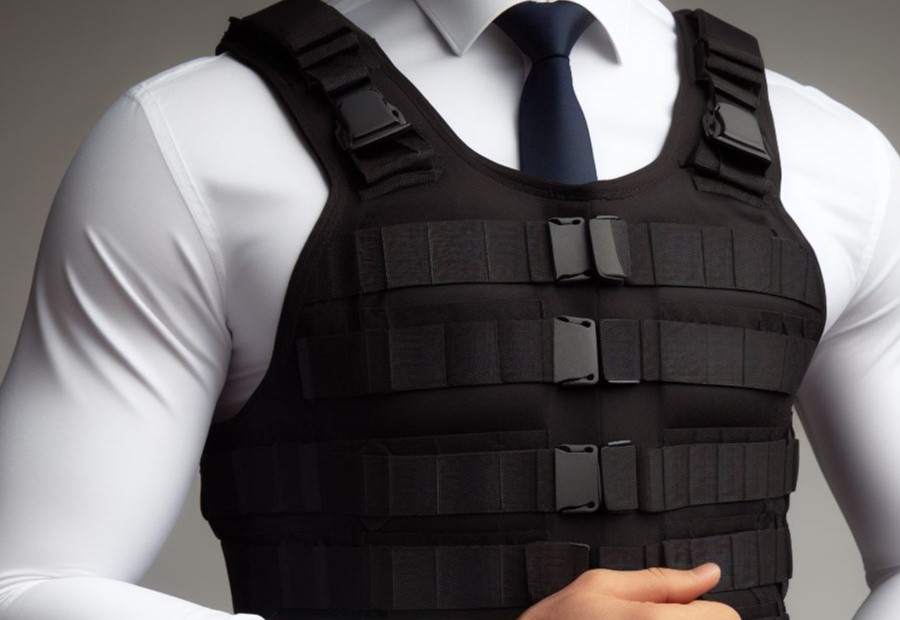
When it comes to choosing a concealed bulletproof vest, there are important legal considerations to keep in mind. In this section, we’ll dive into the various factors that pertain to the legality of owning and using a concealed bulletproof vest.
We’ll explore the existing laws and regulations surrounding these protective gears, ownership restrictions that may apply, and guidelines for proper usage and disclosure. So, let’s navigate through the legal landscape to ensure you make an informed decision about your safety gear.
Laws and Regulations
- Before purchasing and using a concealed bulletproof vest, it is essential to understand the laws and regulations surrounding them.
- It is important to familiarize yourself with the local, state, and federal laws regarding the possession, use, and sale of concealed bulletproof vests.
- Some jurisdictions may have specific requirements or restrictions on the types of concealed bulletproof vests that are allowed.
- Make sure to comply with any licensing or registration requirements that may be in place.
- To prevent any legal issues or complications, it is crucial to understand the legal obligations and responsibilities associated with owning and using a concealed bulletproof vest.
- Stay updated with any changes in legislation or regulations pertaining to concealed bulletproof vests to ensure compliance.
Ownership Restrictions
When it comes to owning a concealed bulletproof vest, there are certain ownership restrictions that need to be considered. These restrictions vary depending on the jurisdiction you are in.
It is important to comply with the laws and regulations in your area to ensure legal ownership of a bulletproof vest.
| 1. Know the Laws | Research and familiarize yourself with the laws and regulations regarding the ownership restrictions and possession of bulletproof vests. Some jurisdictions may have specific restrictions on who can purchase or own them. |
| 2. Age Limitations | Check if there are any age limitations for owning a bulletproof vest. Certain jurisdictions may require individuals to be a certain age before they can legally possess such protective equipment. |
| 3. Criminal Record | Be aware that individuals with certain criminal records may be prohibited from owning or purchasing a bulletproof vest. Check if there are any ownership restrictions based on past convictions. |
| 4. Licensing or Permits | In some jurisdictions, owning a bulletproof vest may require a license or permit. Make sure to follow the necessary procedures to obtain the required documentation for legal ownership restrictions. |
| 5. Proper Usage and Disclosure | Be mindful of using and disclosing the ownership of a bulletproof vest appropriately. Some jurisdictions may have laws regarding the use of protective equipment in certain situations or environments. |
Proper Usage and Disclosure
When it comes to the proper usage and disclosure of concealed bulletproof vests, it is crucial to adhere to certain guidelines and legal considerations.
- Know the laws and regulations: Familiarize yourself with the laws and regulations surrounding the use and ownership of concealed bulletproof vests in your area. It is of utmost importance to understand any restrictions or requirements imposed by local authorities.
- Follow proper usage guidelines: Use the concealed bulletproof vest responsibly and only in situations where it is legal and necessary. Avoid using it for any illegal activities or purposes that may endanger others.
- Understand proper disclosure: When wearing a concealed bulletproof vest, be respectful and transparent about its presence. In situations where it may be required, such as during interactions with law enforcement, promptly disclose the presence of the vest to ensure safety and effective communication.
- Educate others: It is essential to educate others about the proper usage and disclosure of concealed bulletproof vests. Share information on the legal considerations and guidelines to promote responsible and informed use.
- Maintain and store properly: Properly maintain and store your concealed bulletproof vest according to the manufacturer’s instructions. Regularly check for any signs of damage or wear and tear, and ensure it is stored in a safe and secure location.
By adhering to these guidelines and considering the appropriate usage and disclosure of concealed bulletproof vests, you can promote safety and responsible use of this protective gear.
Frequently Asked Questions
How do I choose the right concealable bulletproof vest?
When choosing a concealable bulletproof vest, it is important to consider factors such as the level of protection, weight, mobility, and comfort. You should also take into account the specific circumstances and intended use, whether it’s for civilian jobs, policing, or military purposes.
Additionally, ensure that the vest fits properly, covering vital organs with maximum coverage while allowing proper mobility.
What are trauma plates, and why should they be worn in a concealable body armor?
Trauma plates are additional plates or inserts that are worn in the pockets provided in a concealable body armor. They offer extra protection against blunt force trauma.
While the primary purpose of a bulletproof vest is to stop bullets, trauma plates provide added defense against impacts and reduce the risk of injury from high-velocity projectiles or blunt objects.
What are the recommended materials for bulletproof vests?
Kevlar used to be a commonly used material for bulletproof vests, but other materials such as UHMWPE and carbon fiber are now preferred. These materials offer enhanced protection while being lightweight and flexible. They provide an optimal balance between comfort, mobility, and ballistic resistance.
How should I take care of my concealable bulletproof vest?
Proper care and maintenance of a concealable bulletproof vest are essential for its effectiveness and longevity. The outside carrier can be washed in the gentle cycle and dried in the dryer, although it is recommended to have multiple carriers.
The armor panels should be cleaned with a damp, soapy sponge and air-dried, avoiding direct sun exposure. Regularly inspect the vest for any anomalies and report them to the manufacturer for repair or replacement if necessary.
Can I use a concealable bulletproof vest for military-grade protection?
Concealable bulletproof vests primarily provide protection against handguns and shotguns. They may not be suitable for military-grade protection, especially against rifle rounds. Hard plate armor is designed for high-risk protection and military uses, offering a higher level of defense against rifle rounds.
If you require specialized ballistic protection for military purposes, it is recommended to consider hard plate armor vests that are designed to withstand high-velocity impacts.
What is the importance of proper fit and sizing when choosing a concealable bulletproof vest?
Proper fit and sizing are crucial for the effectiveness and comfort of a concealable bulletproof vest. The vest should be custom-fit to your individual dimensions and shape, ensuring optimal coverage of vital organs while allowing for proper mobility.
Taking accurate measurements, including chest, waist circumference, and height, is essential for finding the right size. A well-fitted vest stays in place during movements and provides maximum protection against potential threats.

